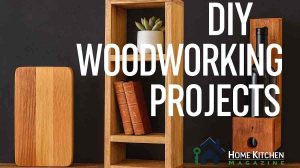On a quiet Sunday morning, a faint hum of a drill echoes through a small apartment in Brooklyn. A young woman, tired of cluttered counters and overstuffed cabinets, finally decides to take control of her space. With a few wooden planks, some screws, and a bold idea, she sets out to build a floating shelf — not just to store things, but to transform her room into a place of calm and creativity.
It’s in moments like these that we rediscover the beauty of simplicity — where design meets purpose. Whether you live in a city apartment, a suburban home, or a cozy studio, learning how to build a floating shelf is more than a DIY project; it’s an act of reclaiming your environment.
And the best part? You don’t need to be a carpenter. With just a few tools and the right approach, you can create sleek, sturdy shelves that seem to float magically against your wall — all while saving money and adding serious aesthetic value.
Why Floating Shelves Are More Than Just Storage
In the world of modern home organization, floating shelves are the epitome of functional minimalism. They offer both form and function, allowing you to display your favorite books, plants, and keepsakes without the bulk of traditional shelving.
According to a 2025 survey by Home Improvement Research Institute (HIRI), more than 61% of homeowners plan at least one DIY home project this year, with floating shelves ranking among the top five most popular upgrades. People aren’t just building for utility — they’re building for personality and design.
Floating shelves also boost your home’s perceived value. A report from Zillow found that homes with modern wall-mounted storage solutions, including DIY floating shelves, tend to sell 2–3% faster than those without. That’s the power of simple elegance.
Mounting your shelf at eye-level or above a counter is one of the cleverest floating shelf ideas—if you have a smaller space, our article on small kitchen ideas shows 21 ways to maximize style and storage in tight kitchens just like yours
How to Build a Floating Shelf
Step 1: Choose the Perfect Spot and Measure Carefully
Every great design starts with intention. Before grabbing your drill, visualize where your floating shelf will go. Is it over your TV? In the kitchen above the counter? Or maybe in your bathroom for towels and decor?
- Use painter’s tape to mark the exact position.
- Measure the desired height — typically eye level (around 56–60 inches) works best for balance.
- Check for wall studs using a stud finder. These provide strong anchor points and prevent sagging.
💡 Pro Tip: For drywall installations, never rely solely on screws. Always use metal anchors or toggle bolts to ensure stability.
Step 2: Select the Right Materials
When planning how to build a floating shelf, material selection is crucial. You’ll need:
- Wood board: Choose pine, oak, or walnut for durability. Pine is most cost-effective, while walnut offers a premium look.
- Brackets: Opt for hidden floating shelf brackets that provide a seamless “invisible” appearance.
- Finishing supplies: Sandpaper, stain or paint, and polyurethane for a polished finish.
DIY floating shelf projects typically cost between $20 and $50, depending on size and material. Compare that to retail shelves, which can easily exceed $100, and you’ll see why doing it yourself makes sense — both creatively and financially.
As you explore how to build shelving that appears to float effortlessly, check out our detailed guide on best kitchen storage solutions for small spaces — it offers smart ideas for counting every inch and integrating hidden shelving seamlessly.
Before you start, it’s worth consulting a detailed installation guide from a trusted source—take a look at this step-by-step guide on “How to Fit Floating Shelves” (see link below). It walks you through choosing the right fixings, locating studs, and securing the shelf safely, which complements our discussion here on how to build a floating shelf. Using reliable reference material like this adds depth and trustworthiness to your article. You can check out the guide here: How to Fit Floating Shelves – Fitting Instructions
Step 3: Cut, Sand, and Prep the Wood
Now comes the craft. Cut your wood board to the desired length — most homeowners go for 24–36 inches for balance and proportion. Use a fine-grit sandpaper (120–180) to smooth the edges.
Once sanded, apply a wood stain that matches your interior. Rich walnut tones give warmth, while white or grey finishes suit minimalist interiors. Don’t forget to seal the wood with a clear coat of polyurethane for protection.
✨ Golden Tip: Always sand with the grain, not against it. This prevents scratches and gives your floating shelf a smooth, professional finish.
Step 4: Install the Brackets Securely
Here’s where the magic happens — the illusion of “floating.”
- Hold the bracket against the wall and mark drill holes.
- Drill pilot holes into studs or anchors.
- Screw the bracket tightly using a power drill.
- Slide your shelf onto the bracket arms, ensuring it fits snugly.
Once installed, step back. You’ll see your DIY floating shelf levitating elegantly — sturdy, modern, and satisfying.
💬 Did you know? According to Home Depot’s DIY trend report (2024), floating shelves are among the top three beginner-friendly projects, requiring less than two hours for completion.
Step 5: Style It Like a Designer
The true charm of learning how to build a floating shelf is in personalization. Styling brings your creation to life. Here are a few floating shelf ideas to make it pop:
- Layer textures: Mix ceramics, wood, and glass for contrast.
- Play with symmetry: Balance heavier items like books with lighter ones like plants.
- Use lighting: LED strip lights under the shelf can create a stunning floating glow.
- Add nature: A small potted plant or hanging ivy adds a refreshing touch.
💡 Pro Styling Insight: Follow the rule of thirds — group items in threes for a balanced and visually appealing arrangement.
Even with beautiful shelving in place, the key is in the items you display — for a full zone-by-zone overhaul of your kitchen layout, you’ll want to dive into our guide on how to organize a small kitchen and keep everything in its place
Common Mistakes to Avoid
Even seasoned DIYers make small errors. Avoid these common pitfalls to keep your shelves safe and stunning:
- Using cheap wall anchors that can’t support weight.
- Ignoring wall stud positions.
- Skipping sanding and finishing.
- Overloading shelves with heavy objects.
Rule of thumb: Keep each floating shelf under 40 pounds, including brackets and decorations.
Real-Life Inspiration: From Small Spaces to Statement Walls
Interior designers swear by floating shelves to elevate compact spaces.
A 2025 Houzz Home Trends Report shows that 73% of small apartment dwellers prefer open, wall-mounted storage to maximize space and minimize clutter.
For example, a single DIY floating shelf above a kitchen sink can hold jars and herbs, while two stacked shelves in a hallway create a mini art display. Simple adjustments, powerful impact.
Sustainability and Minimal Waste
Building your own shelf isn’t just satisfying — it’s sustainable.
Using reclaimed wood or eco-certified materials reduces carbon footprint and promotes conscious consumption. Many DIY enthusiasts also repurpose leftover wood from old furniture to craft their floating shelf, cutting waste by nearly 40% per project, according to EcoBuild Journal (2024).
Final Thoughts: Crafting Confidence, One Shelf at a Time
There’s something empowering about standing back and seeing your handiwork on the wall.
Learning how to build a floating shelf teaches more than woodworking — it teaches patience, precision, and pride in simplicity.
When visitors ask, “Where did you buy that?”
You’ll smile and say, “I made it.”
Because sometimes, the most beautiful things in your home aren’t the ones you buy — but the ones you build.
If you’re eager to go beyond just one shelf and build a full set of floating units or built-in shelving systems, check out our DIY woodworking projects page — it features creative ideas with timber, hidden compartments and modular setups that complement your shelving venture
✅ Key Takeaways
- Plan with precision: Measure twice, drill once.
- Use sturdy materials: Quality wood and hidden brackets make all the difference.
- Style smartly: Add personality through plants, books, and lighting.
- Think sustainable: Use reclaimed materials whenever possible.
- Enjoy the process: It’s not just construction — it’s creation.




 Home Kitchen Magazine is a blog dedicated to giving you inspiration and tips every day about the home, kitchen and garden.
Home Kitchen Magazine is a blog dedicated to giving you inspiration and tips every day about the home, kitchen and garden.

